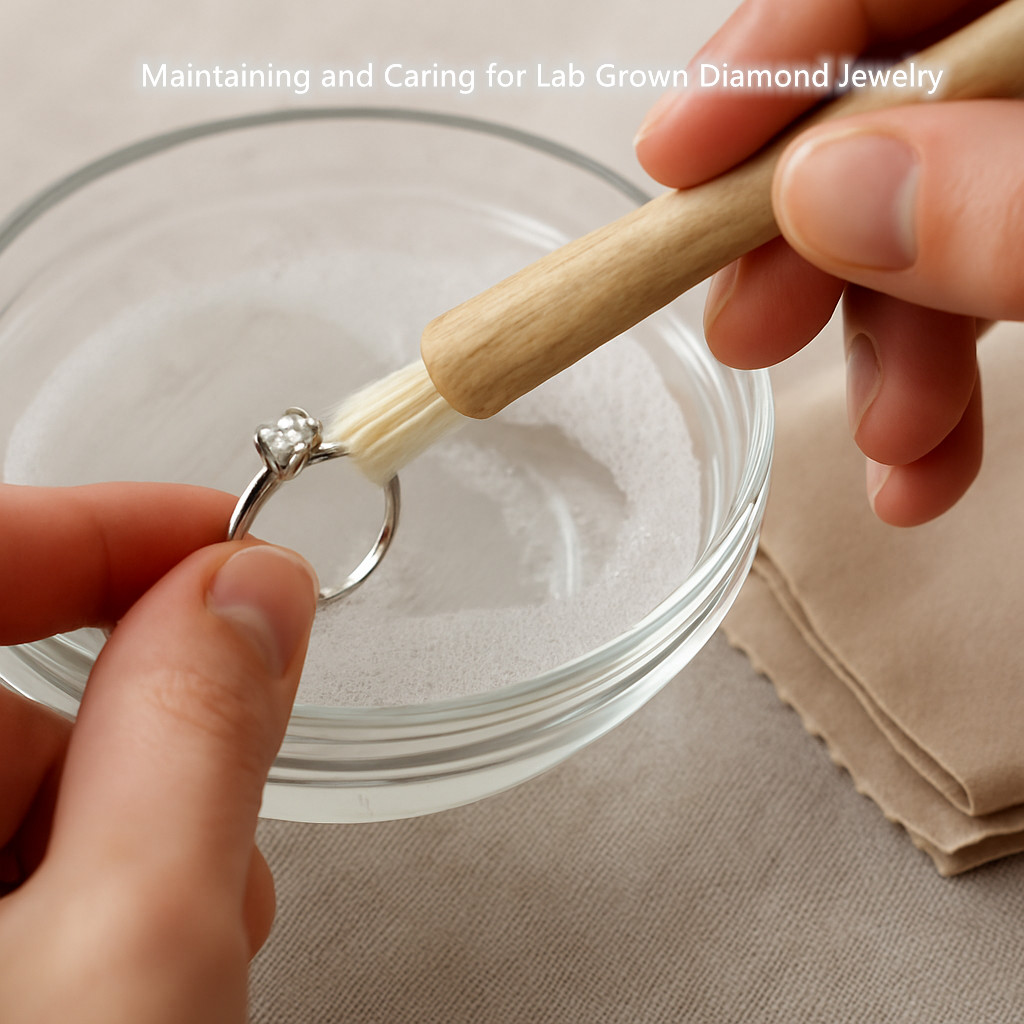
Maintaining and Caring for Lab Grown Diamond Jewelry: Tips to Extend Its Lifespan
Lab grown diamonds, also known as cultured or synthetic diamonds, are an increasingly popular choice for engagement rings, necklaces, earrings, and other fine jewelry. These diamonds are virtually identical to natural diamonds in appearance, durability, and chemical composition. However, just like any fine jewelry, lab grown diamond jewelry requires proper care and maintenance to retain its beauty and longevity. In this guide, we’ll cover practical tips on cleaning, storing, and inspecting your lab grown diamond jewelry to ensure it stays stunning for years to come.
1. Regular Cleaning to Keep Your Lab Grown Diamonds Sparkling
One of the most important steps in maintaining your lab grown diamond jewelry is regular cleaning. Diamonds naturally attract oils and dirt from your skin, lotion, makeup, and other substances. Over time, this buildup can cause your diamond to appear dull, affecting its brilliance and shine. Regular cleaning removes this debris and keeps your diamonds looking as stunning as the day you bought them.
To clean your lab grown diamond jewelry, follow these simple steps:
Create a Cleaning Solution: Mix a few drops of mild dish soap with warm water in a small bowl. Avoid using harsh chemicals or cleaners with ammonia or bleach, as these can damage your jewelry.
Soak the Jewelry: Place your lab grown diamond jewelry in the solution for 15-20 minutes to loosen any dirt or grime.
Gently Scrub with a Soft Brush: Use a soft-bristled toothbrush to gently scrub the surface of the diamond, paying attention to the crevices where dirt can accumulate.
Rinse and Dry: Rinse the jewelry under warm running water and gently pat it dry with a soft cloth.
For an extra shine, you can finish off by polishing your jewelry with a jewelry cloth. This adds a layer of protection and helps maintain its sparkle.
2. Avoid Chemicals and Harsh Cleaning Products
Lab grown diamonds are incredibly durable, but they are not invincible. Certain chemicals can damage the metal settings or even affect the diamond’s clarity and shine over time. For example, chlorine, commonly found in swimming pools, can weaken the metal setting of your jewelry.
To preserve the integrity of your lab grown diamond jewelry, avoid exposing it to:
Chlorine or bleach: Avoid wearing your jewelry while swimming in pools or cleaning with bleach-based products.
Cosmetics and perfumes: Always apply perfumes, lotions, and hairsprays before wearing your jewelry to prevent buildup on the diamond’s surface.
Harsh cleaning products: Avoid using strong chemicals like ammonia, which can erode the metal and dull the diamond.
If you must use chemicals or cleaning products, ensure your jewelry is safely stored and removed beforehand.
3. Proper Storage for Your Lab Grown Diamond Jewelry
When you’re not wearing your lab grown diamond jewelry, proper storage is essential to prevent damage and ensure it stays in pristine condition.
Keep Your Jewelry in a Soft Pouch or Jewelry Box: When storing your jewelry, place it in a soft pouch or a jewelry box with separate compartments. This prevents scratching or damage caused by contact with other pieces of jewelry.
Avoid Storing in Direct Sunlight or Humid Areas: Store your jewelry in a cool, dry place away from direct sunlight and humidity, which can affect both the metal and the diamond.
Use a Jewelry Box with a Lined Interior: A jewelry box with soft lining can help prevent scratches and other damage to both the diamond and its metal setting.
4. Inspecting Your Jewelry Regularly
Regular inspections are essential to ensure that your lab grown diamond jewelry is in excellent condition. This helps identify any potential issues early, such as loose settings or signs of wear.
Check the Setting: Ensure the diamond is securely held in its setting. If you notice any looseness, take it to a professional jeweler for tightening.
Examine for Scratches or Chips: Inspect the surface of your diamond for any scratches or chips. While lab grown diamonds are durable, they can still be scratched or chipped if exposed to harsh conditions.
Inspect the Metal for Wear: The metal setting or band can wear over time, so it’s important to check for any signs of damage, such as thinning or discoloration.
5. Professional Care and Maintenance
For the best care of your lab grown diamond jewelry, consider having it professionally cleaned and inspected once a year. Professional jewelers have the expertise and tools to clean your jewelry thoroughly and ensure that it’s in top condition.
Lab grown diamond jewelry is a beautiful and sustainable investment, and with the right care, it can last for many years. Regular cleaning, proper storage, and regular inspections will help maintain the brilliance and integrity of your jewelry, ensuring it continues to sparkle for generations.
By following these simple maintenance tips, your lab grown diamond jewelry will continue to dazzle and shine, a perfect reminder of life’s precious moments.










